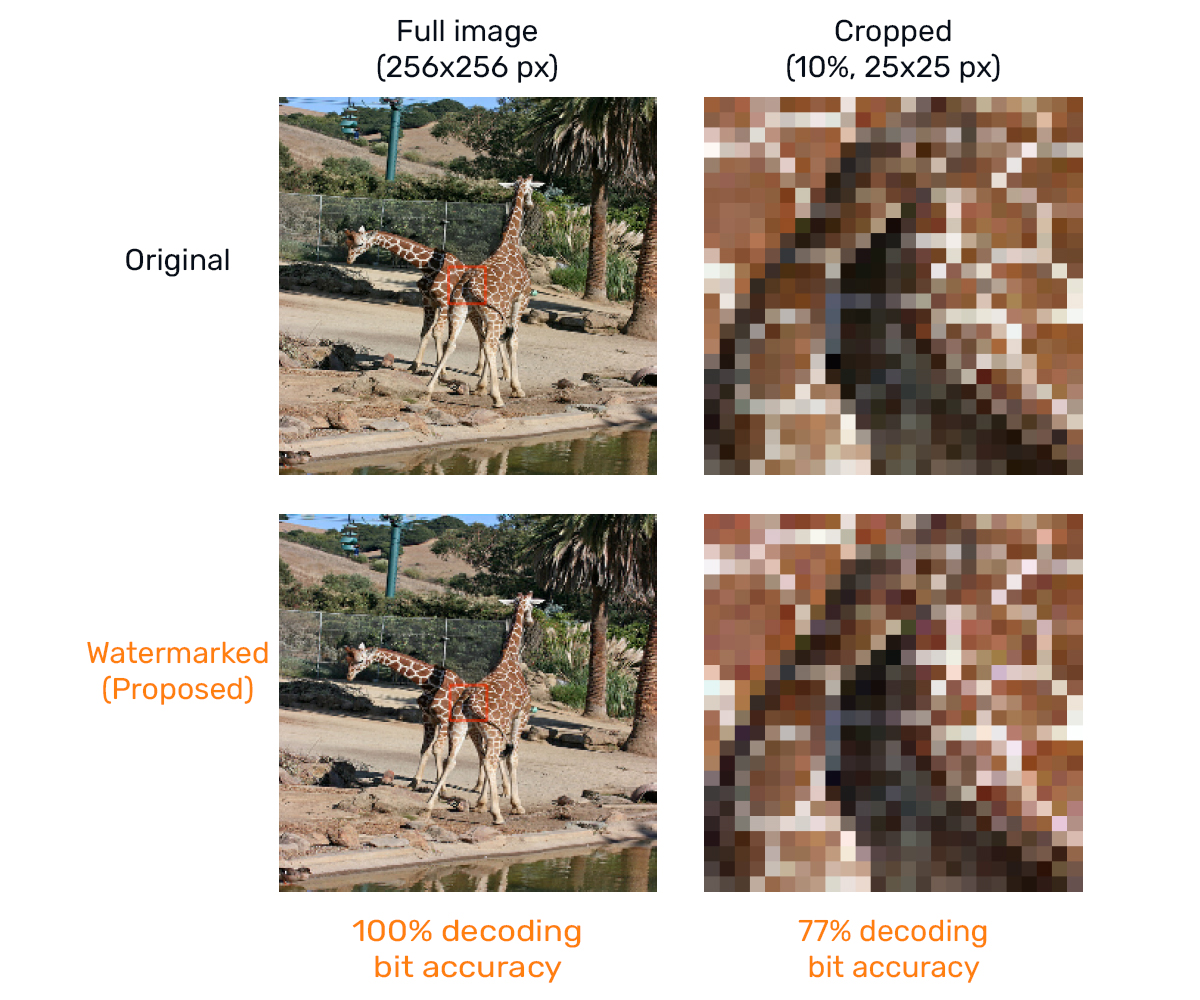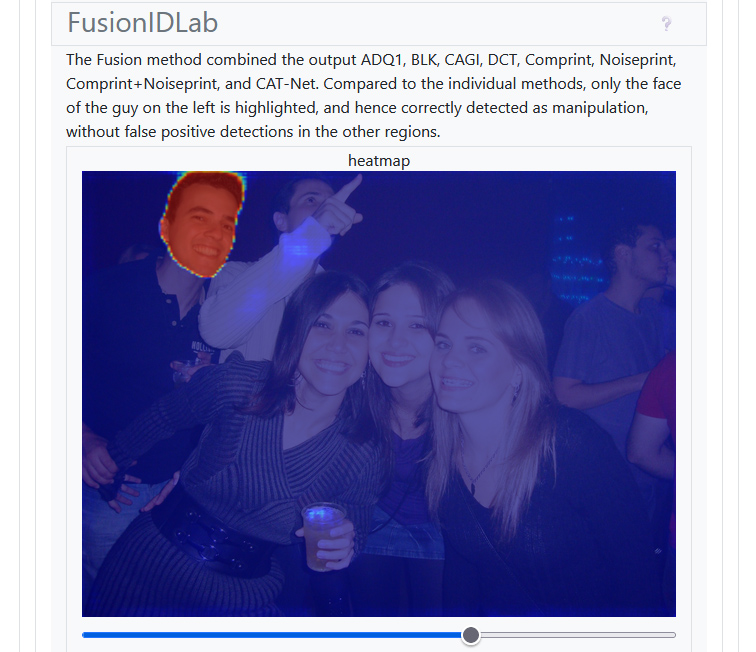We present COM-PRESS - An Image Manipulation Analysis Dashboard for Fact-checkers. COM-PRESS results from an interdisciplinary project, which fosters collaboration between computer and communication scientists, as well as the media. The tool is in its alpha version and publicly available on:
https://com-press.ilabt.imec.be.
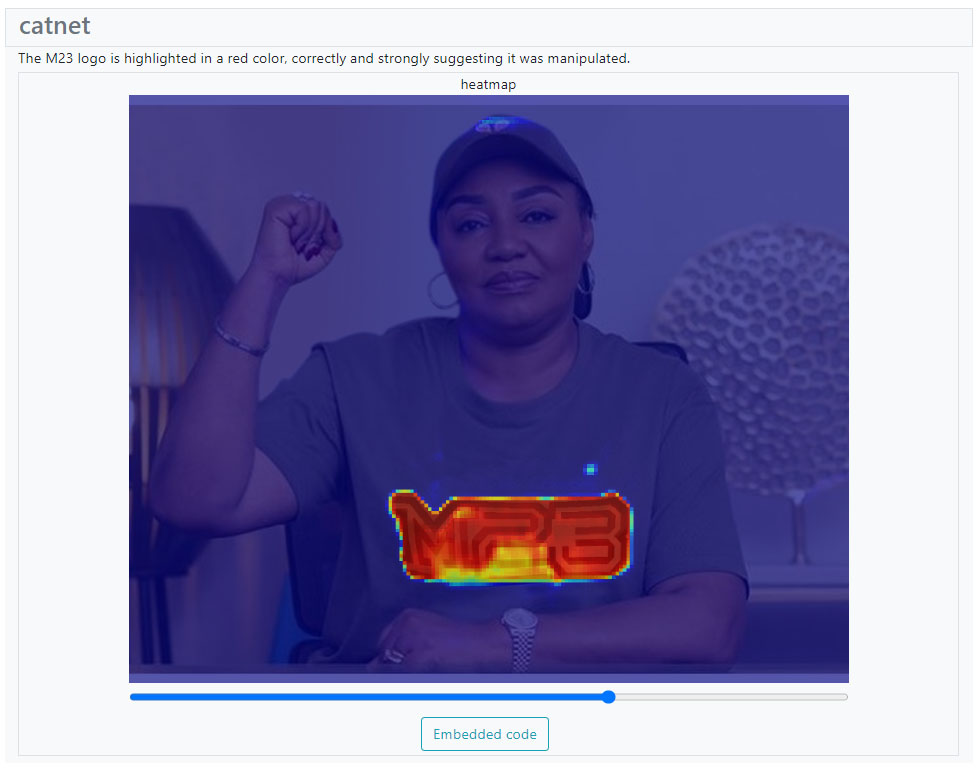 Example result page of classic photoshop edited image: https://com-press.ilabt.imec.be/result/v7s_2xpLb, with comments to aid interpretation, a slider to change the heatmap transparency, and an embedded-code button. More examples here.
Example result page of classic photoshop edited image: https://com-press.ilabt.imec.be/result/v7s_2xpLb, with comments to aid interpretation, a slider to change the heatmap transparency, and an embedded-code button. More examples here.
We present this dashboard at two scientific conventions. First, at the Multidisciplinary International Symposium on Disinformation in Open Online Media (MISDOOM) 2023, on 21 November 2023 in Amsterdam, The Netherlands. At this symposium, our extended abstract on COM-PRESS was formally accepted. Second, at the IEEE CTSoc Gaming, Entertainment and Media (GEM) conference, on 7 June 2024 in Turin, Italy (COM-PRESS: Dashboard to Detect (AI-Based) Image Manipulations). A short teaser video of the demo can be seen below:
Demo video of our public COM-PRESS website.
The advancement of artificial intelligence has made it easier to manipulate images. For example, FireFly or Photoshop Generative Fill enables users to realistically add or delete objects in an image without the need for advanced technical skills. As a result, there is a growing concern that manipulated images will be used more frequently for disinformation purposes.
To address this challenge, we designed COM-PRESS to equip journalists with efficient image manipulation detection methods, aiding them in fact-checking processes.
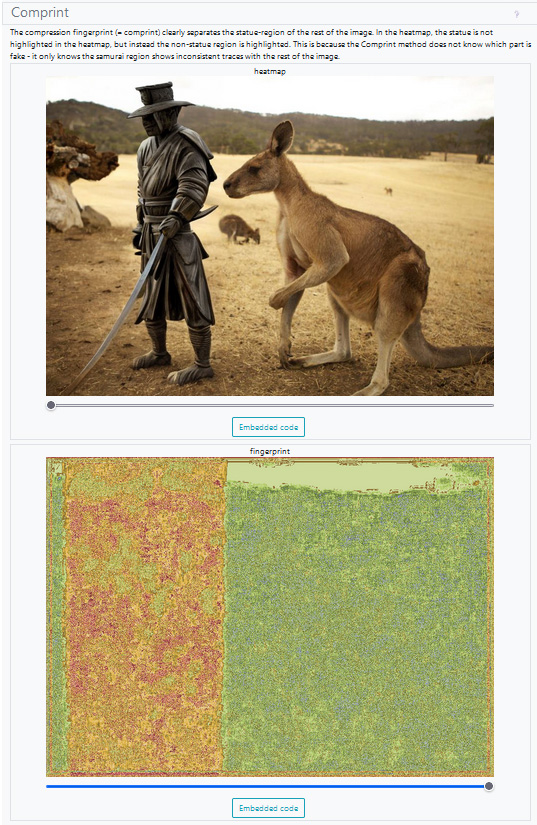 Example result page of generative filled image: https://com-press.ilabt.imec.be/result/MdcOK2HQe.
Example result page of generative filled image: https://com-press.ilabt.imec.be/result/MdcOK2HQe.
The workflow to analyze images in COM-PRESS is as follows. First, users upload an image of interest (i.e., fact-check worthy). The image is then analyzed using multiple state-of-the-art forgery detection methods. The results are then visually presented on the website as heatmaps that highlight potential manipulations or inconsistencies.
To aid the online publication of fact-checks, the dashboard provides two additional features which were derived from interviews with fact-checkers at the beginning of the research project:
- A button to show embedded code is provided, which journalists can copy and paste in their online article. The embedded code enables the visualization of a heatmap image along with a slider to change the transparency to make the underlying image of interest visible. Within fact-checking, transparency is key, and such an embedded code thus strengthens the online fact-check publication.
- Comments next to the images and heatmaps, which fact-checkers or consulted experts can add. In this way, the COM-PRESS result page can be linked to in articles, and readers are provided with contextual information and interpretations. Fact-checkers oftentimes rely on expert interpretations, hence this was an essential feature to fit the tool in the current fact-checking practices.
The dashboard incorporates both conventional and more-recent, high-performing, AI-based forgery detection methods. These methods are DCT (2007), BLK (2008), ADQ1 (2009), ADQ2 (2011), ADQ3 (2014), CAGI (2018), Noiseprint (2019), Comprint (2022), CAT-Net (2022), TruFor (2023), and FOCAL (2023). More info and references can be found here. These tools can detect a variety of image manipulations: from classic photoshop edits, to deepfake faceswaps, to inpainting using generative AI.
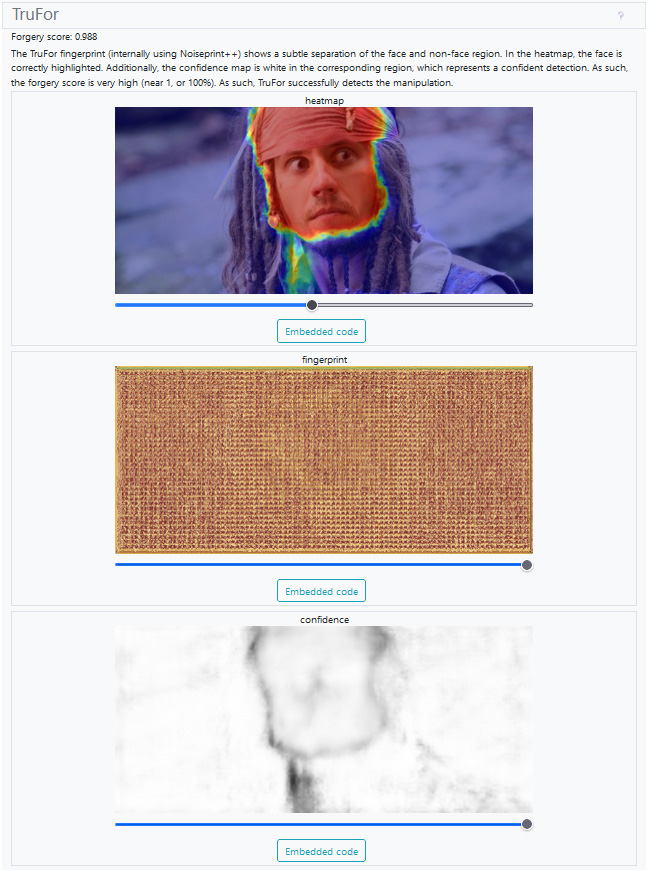 Example result page of deepfake faceswaped image: https://com-press.ilabt.imec.be/result/EMFLM2LrP.
Example result page of deepfake faceswaped image: https://com-press.ilabt.imec.be/result/EMFLM2LrP.
In future versions of COM-PRESS, we will incorporate fusion of detection methods. Moreover, we will provide more transparency on the performance of the methods, as well as a tutorial on how to interpret the results, to meet previously detected fact-checker’s needs. Furthermore, we will perform a user study to pinpoint opportunities to improve the dashboard.
In conclusion, COM-PRESS offers journalists a valuable resource to enhance image fact-checking and combat disinformation. By leveraging multidisciplinary approaches and open-source detection methods, it equips journalists with additional tools necessary to verify the authenticity of images and promote the dissemination of accurate information in the face of growing online disinformation.
The consortium of COM-PRESS consists of the research groups IDLab-MEDIA and mict (both from UGent-imec), who join forces with Apache (De Werktitel cv) as media partner. Moreover, the consortium is working with CheckFirst to build a dashboard. The project runs from October 2022 to June 2024, with subsidies from the Flemish government’s Department of Culture, Youth & Media (Departement Cultuur Jeugd & Media).
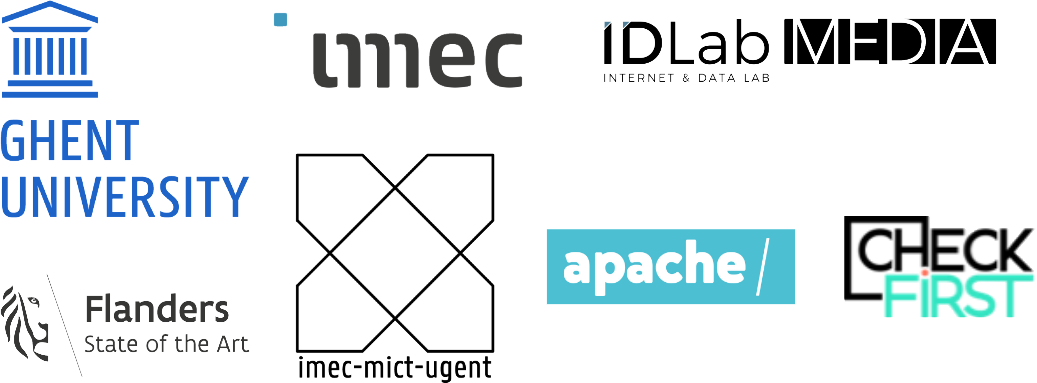
Papers downloads:
COM-PRESS: An Image Manipulation Analysis Dashboard for Fact-checkers
COM-PRESS: Dashboard to Detect (AI-Based) Image Manipulations


